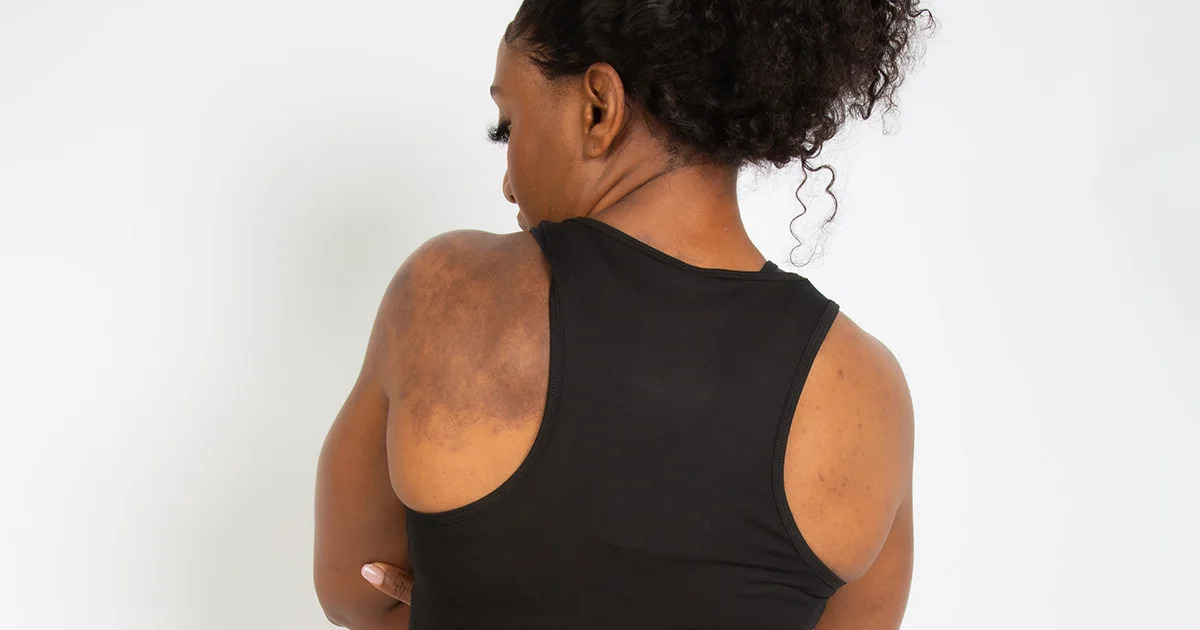Here's what we'll cover
Here's what we'll cover
Waist-to-hip ratio or WHR is a number that you find by dividing the size of the smallest part of your waist by the widest part of your hips—and it may be able to gauge your risk of developing health problems like metabolic syndrome and heart disease.
What is waist-to-hip ratio?
To expand on the definition above, your waist-to-hip ratio is a number that compares the circumference of your waist to the circumference of your hips.
You calculate it by measuring the smallest part of your waist and the widest part of your hips. You then divide your waist measurement by your hip measurement. The number you end up with is your waist-to-hip ratio.
Waist-to-hip ratios break down into ranges that correspond to a low, moderate, or high risk of developing certain health conditions. In that way, WHR is a similar health measure to body mass index (BMI), waist-to-height ratio, or waist circumference.
Waist-to-hip ratio vs. BMI
WHR may be a more accurate measure of health risk than BMI (Peters, 2018). Weight is a notoriously tricky way to measure health since it doesn’t capture someone’s body composition or how much fat tissue or muscle mass they have.
Since BMI uses height and weight, it’s also prone to these problems. Muscle is denser than fat and other tissues in the body. As a result, very muscular people can have a BMI deemed “overweight” because their scale weight will likely be higher than someone of the same height with less muscle.
Waist-to-hip ratio is also a more accurate measure of your heart attack risk than BMI, one study found. This is especially true for women (Peters, 2018). WHR is also more accurate at predicting death in women with heart failure than BMI (Streng, 2018).
Why is it a more accurate measure of certain health risks? Waist-hip ratio can be more effective than BMI at predicting certain disease risks and health complications because it tells us where someone holds fat tissue—mostly at their waist (sometimes called "apple-shaped") or on their hips and thighs (sometimes called "pear-shaped") (Joseph, 2015; Moosaie, 2021).
Carrying more fat tissue in the abdomen and waist than elsewhere in the body is more closely associated with health risks like type 2 diabetes, high blood pressure, and plaque buildup in the arteries (Lotta, 2018).
But two people of the same height and bodyweight will have the same BMI, even if one holds more fat tissue around the hips and the other holds it around their waist.
Can you use WHR and BMI together?
Using these two measurements together may be especially important for people with a normal BMI. People who hold more fat tissue around their waist than their hips might have a normal BMI, and if they only ever test their BMI, they may not be aware they have a higher risk of certain health conditions based on their body fat distribution.
For example, women with a normal BMI but a higher waist-to-hip ratio may be more likely to have signs of insulin resistance, which can be a sign of prediabetes, than those with a lower waist-hip ratio (Benites-Zapata, 2019; Alvarez, 2021).
How to calculate your waist-to-hip ratio
It’s easy to calculate your waist-to-hip ratio. You’ll start by measuring your waist circumference and hip circumference, which you can do at home with a soft measuring tape (like the kind you find in sewing kits) or with the help of your healthcare provider.
To get your waist circumference (WHO, 2011):
Wrap the soft tape measure around the smallest part of your waist (this is usually slightly above the belly button).
Make sure the measuring tape is parallel to the floor when wrapped around your waist.
Take a normal breath and note the measurement of your waist after you let that air out.
To get your hip circumference (WHO, 2011):
Stand with your feet together
Wrap the soft tape measure around the widest part of your hips, which should include your buttocks.
Make sure the measuring tape is parallel to the floor when wrapped around your hips before determining the measurement.
The tape measure should be snug on your body but not pinching into or creating a divot in your skin during either measurement (WHO, 2011). You should take your measurements in the morning before food or water but after you’ve gone to the bathroom for the most accuracy. It’s also most accurate to take them without clothes on.
Divide your waist measurement in inches by your hip measurement in inches to get your waist-to-hip ratio. People with a smaller waist and larger hips will have a number less than one, and people with wider waists and smaller hips may have a number higher than one.
Waist-to-hip ratio chart
There’s no waist-hip ratio chart that works for everyone, which is why you won’t find one here. There’s evidence that we need multiple ethnicity-specific, and sometimes even disease-specific, risk level charts. Many of the charts you see online reflect research done on European populations.
The World Health Organization looked at studies on waist-hip ratio and health risks and found that the numbers that indicated higher risk in Europeans didn’t hold true for Asians–and that studies were torn on whether these numbers accurately predicted disease risks in Black populations in America (WHO, 2011).
Ultimately, your healthcare provider is the best source of information about potential health risks you face based on your fat tissue distribution, current state of health, and medical history.
What if my waist-to-hip ratio is high?
If your waist-to-hip ratio is high, you may currently have a higher risk of certain health conditions–but that higher risk isn’t set in stone.
Talk to your healthcare provider about all of your options for managing these risks based on your medical history and current lifestyle. Weight loss may be one strategy they recommend.
Waist-to-hip ratio and weight loss
Weight loss can help lower your risk of heart disease in several ways. High BMI and high waist-to-hip ratio are associated with an increased risk of heart disease, so lowering these numbers through weight loss will affect your disease risk.
Losing weight can also decrease how likely it is that you’ll develop high blood pressure or diabetes, two conditions that are also risk factors for heart disease (Gill, 2021).
Remember that these measurements aren’t foolproof—especially if you’re calculating your waist-to-hip ratio at home. Hip measurements are especially tricky to get with consistency.
If you and your healthcare provider decide losing weight is a good strategy for you, don’t get discouraged if the ratio isn’t changing as quickly as you’d like. We also can't control where we first lose adipose (fat) tissue. It may take longer for some people to see their waist size go down than others, even if they're both losing weight.
Adopting healthy lifestyle habits is a good idea for anyone, and doing so can deliver benefits other than changes in measurements or body weight. If you feel better, move better, or sleep better, it may be easier to be patient if it’s taking a while to lower your waist-to-hip ratio.
DISCLAIMER
If you have any medical questions or concerns, please talk to your healthcare provider. The articles on Health Guide are underpinned by peer-reviewed research and information drawn from medical societies and governmental agencies. However, they are not a substitute for professional medical advice, diagnosis, or treatment.
Alvarez, S., Coffey, R., & Algotar, A. (2021). Prediabetes [Updated July 20, 2021]. In: StatPearls [Internet]. Retrieved from https://www.ncbi.nlm.nih.gov/books/NBK459332/
Benites-Zapata, V. A., Toro-Huamanchumo, C. J., Urrunaga-Pastor, D., Guarnizo-Poma, M., Lazaro-Alcantara, H., Paico-Palacios, S., et al. (2019). High waist-to-hip ratio levels are associated with insulin resistance markers in normal-weight women. Diabetes & Metabolic Syndrome: Clinical Research & Reviews , 13 (1), 636–642. doi:10.1016/j.dsx.2018.11.043. Retrieved from https://www.sciencedirect.com/science/article/abs/pii/S1871402118305125
Gill, D., Zuber, V., Dawson, J., Pearson-Stuttard, J., Carter, A. R., Sanderson, E., Karhunen, V., et al. (2021). Risk factors mediating the effect of body mass index and waist-to-hip ratio on cardiovascular outcomes: Mendelian randomization analysis. International Journal of Obesity , 45 (7), 1428–1438. doi:10.1038/s41366-021-00807-4. Retrieved from https://www.nature.com/articles/s41366-021-00807-4
Joseph, B., Zangbar, B., Haider, A. A., Kulvatunyou, N., Khalil, M., Tang, A., et al. (2015). Hips don’t lie: Waist-to-hip ratio in trauma patients. Journal of Trauma and Acute Care Surgery , 79 (6), 1055–1061. doi:10.1097/ta.0000000000000876. Retrieved from https://journals.lww.com/jtrauma/Abstract/2015/12000/Hips_don_t_lie___Waist_to_hip_ratio_in_trauma.26.aspx
Lotta, L. A., Wittemans, L. B., Zuber, V., Stewart, I. D., Sharp, S. J., Luan, J., et al. (2018). Association of genetic variants related to gluteofemoral vs abdominal fat distribution with type 2 diabetes, coronary disease, and cardiovascular risk factors. JAMA , 320 (24), 2553–2563. doi:10.1001/jama.2018.19329. Retrieved from https://jamanetwork.com/journals/jama/article-abstract/2719309
Moosaie, F., Fatemi Abhari, S. M., Deravi, N., Karimi Behnagh, A., Esteghamati, S., Dehghani Firouzabadi, F., et al. (2021). Waist-to-height ratio is a more accurate tool for predicting hypertension than waist-to-hip circumference and BMI in patients with type 2 diabetes: A prospective study. Frontiers in Public Health , 9 . doi:10.3389/fpubh.2021.726288. Retrieved from https://www.frontiersin.org/articles/10.3389/fpubh.2021.726288/full
Peters, S. A., Bots, S. H., & Woodward, M. (2018). Sex differences in the association between measures of general and central adiposity and the risk of myocardial infarction: Results from the UK Biobank. Journal of the American Heart Association , 7 (5), e008507. doi:10.1161/jaha.117.008507. Retrieved from https://www.ahajournals.org/doi/10.1161/JAHA.117.008507
Streng, K. W., Voors, A. A., Hillege, H. L., Anker, S. D., Cleland, J. G., Dickstein, K., et al. (2018). Waist-to-hip ratio and mortality in heart failure. European Journal of Heart Failure , 20 (9), 1269–1277. doi:10.1002/ejhf.1244. Retrieved from https://onlinelibrary.wiley.com/doi/full/10.1002/ejhf.1244
World Health Organization (WHO). (2011, May 16). Waist circumference and waist-hip ratio . World Health Organization. Retrieved March 4, 2022 from https://apps.who.int/iris/bitstream/handle/10665/44583/9789241501491_eng.pdf?sequence












